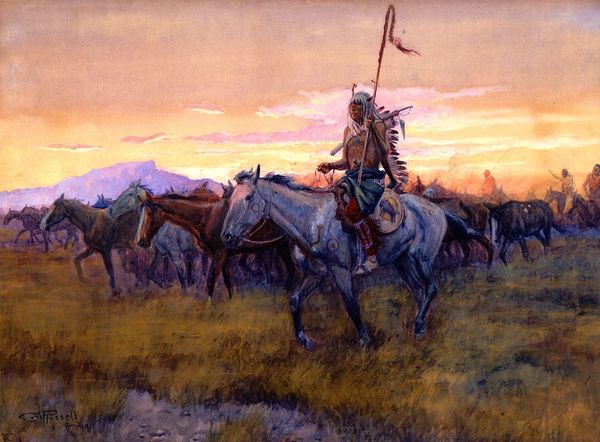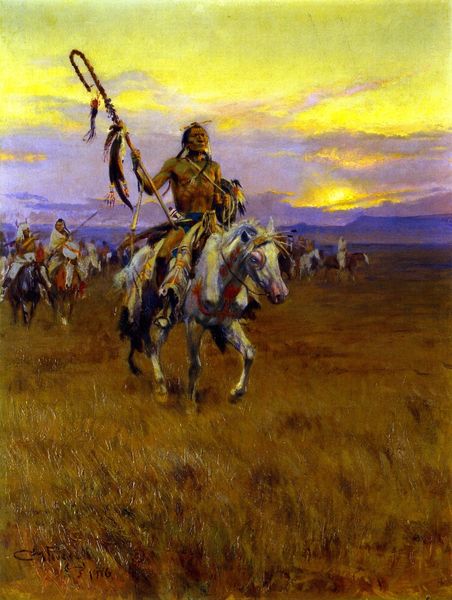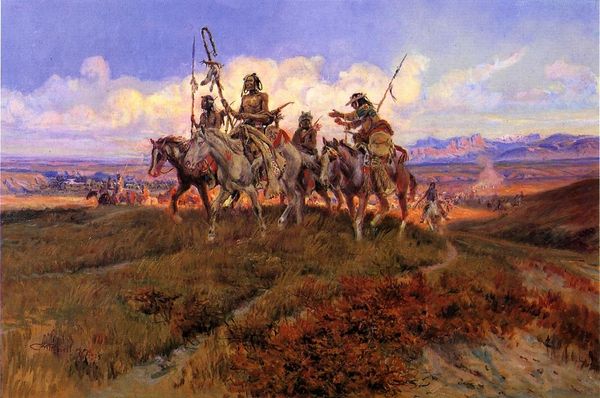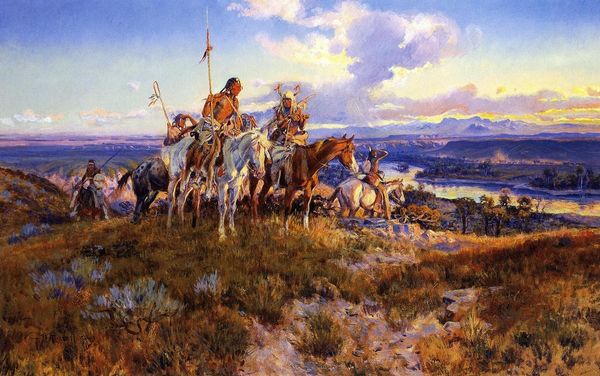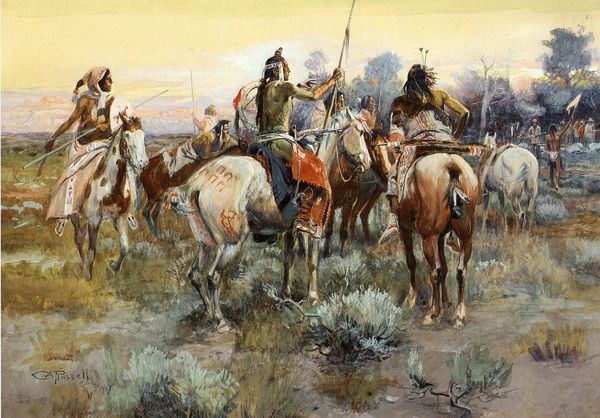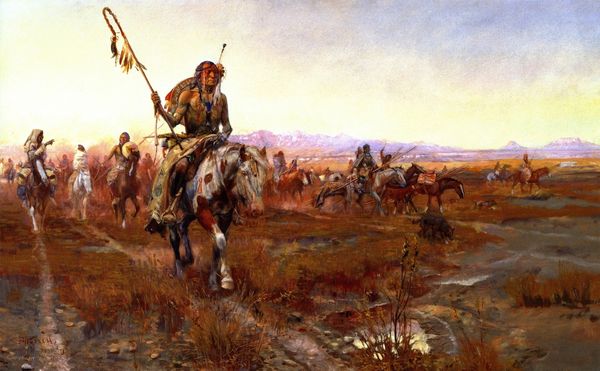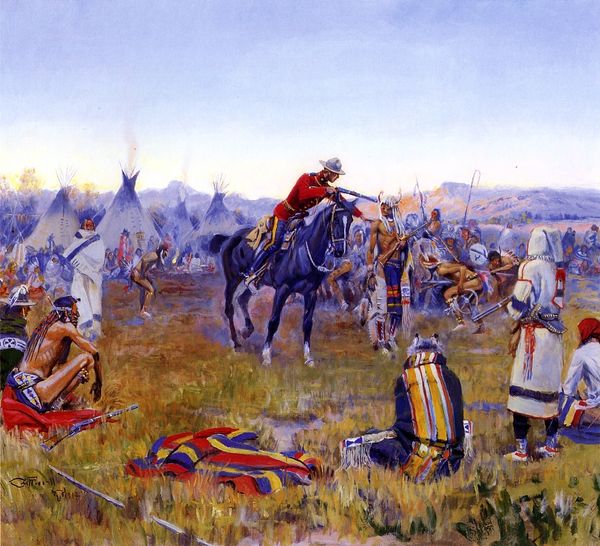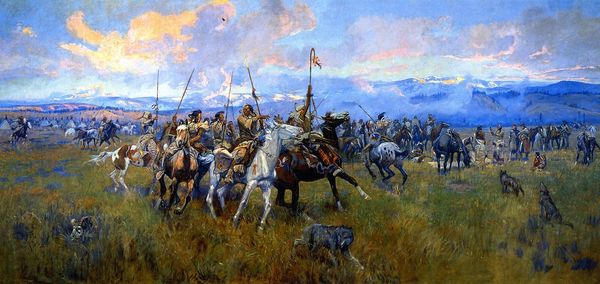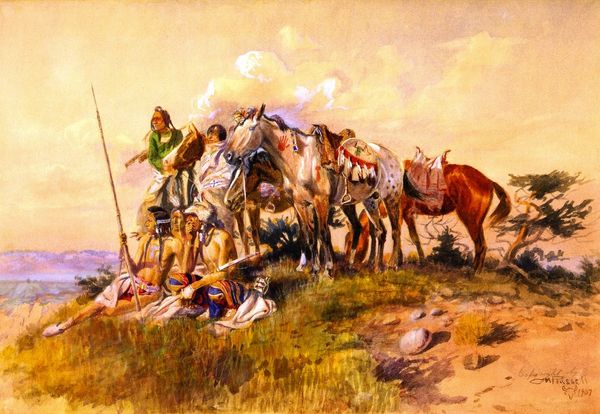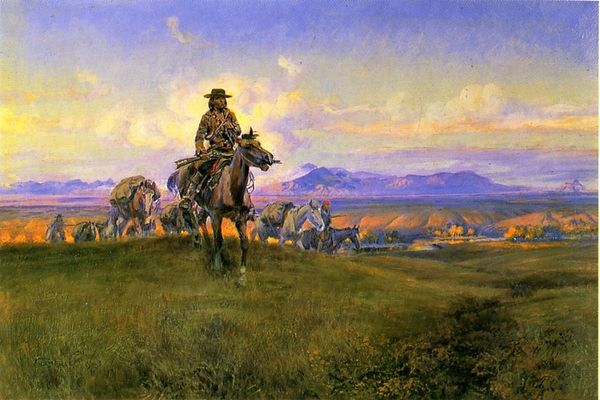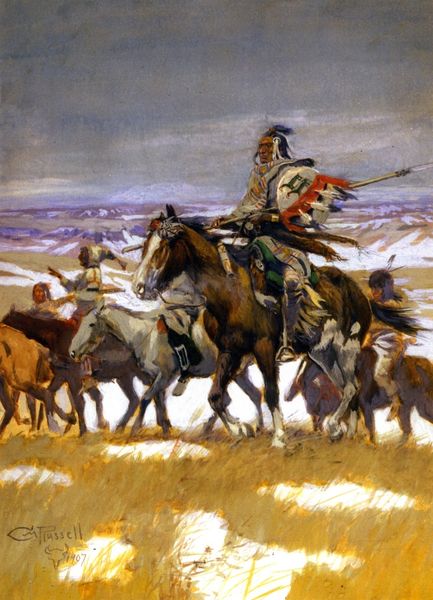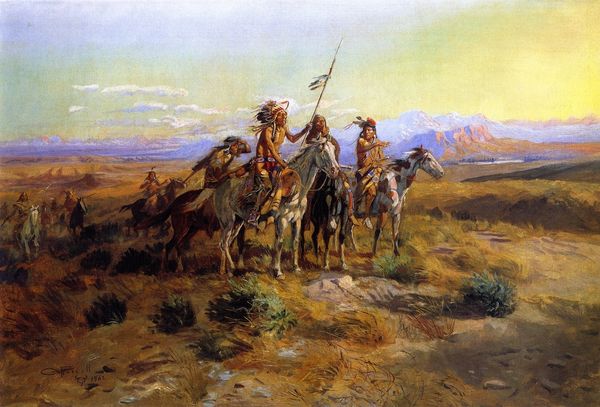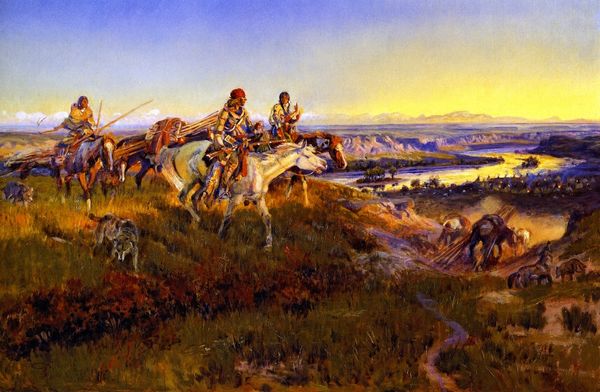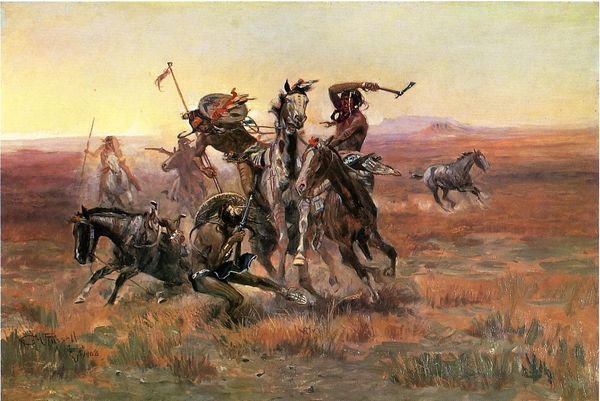
painting, oil-paint
#
narrative-art
#
painting
#
oil-paint
#
landscape
#
impressionist landscape
#
figuration
#
history-painting
Copyright: Public domain
Editor: This is "Lewis and Clark Reach Shoshone Camp Led by Sacajawea the Bird Woman" by Charles M. Russell, painted in 1918, using oil paints. It’s striking how the artist depicts this historical encounter. The figures almost seem to blend into the landscape, as though they’re products *of* the land as much as actors *on* it. What's your read on this piece? Curator: I see it as a commentary on the material conditions of westward expansion. Consider the presence of guns and horses; these technologies significantly reshaped labor practices and power dynamics. What kind of paints did Russel employ? Editor: According to the museum records, he used oil paints. Curator: Oil paint itself became a crucial tool for disseminating these romanticized versions of westward expansion, wasn’t it? Consider the social role these images play. Who commissioned them, and how were they distributed? Were they broadly accessible? Editor: That's a really interesting angle. It does seem to downplay the harsher realities of westward expansion and the resource extraction it involved. Instead of emphasizing these, the land feels more "lived in," maybe less "available" to exploitation than it truly was. How intentional do you think that was? Curator: Intention is less relevant than impact. By focusing on individual figures, he masks the larger forces at play. Did Russell directly benefit from this sort of misrepresentation through increased demand, or popularity of paintings? Look closely: How does the composition, through its materiality, lead viewers to focus on a heroic narrative rather than the economic underpinnings? The painting becomes both document *of* and agent *in* that history. Editor: I see your point. Framing it in terms of material processes and consumption patterns makes me rethink the narrative completely. I hadn't considered how even the choice of painting material serves a particular purpose! Curator: Exactly! Now consider the consumption patterns embedded within these narratives! We're not merely looking *at* a historical scene. We're analyzing the means of production and their role in shaping societal perceptions of that era.
Comments
No comments
Be the first to comment and join the conversation on the ultimate creative platform.
